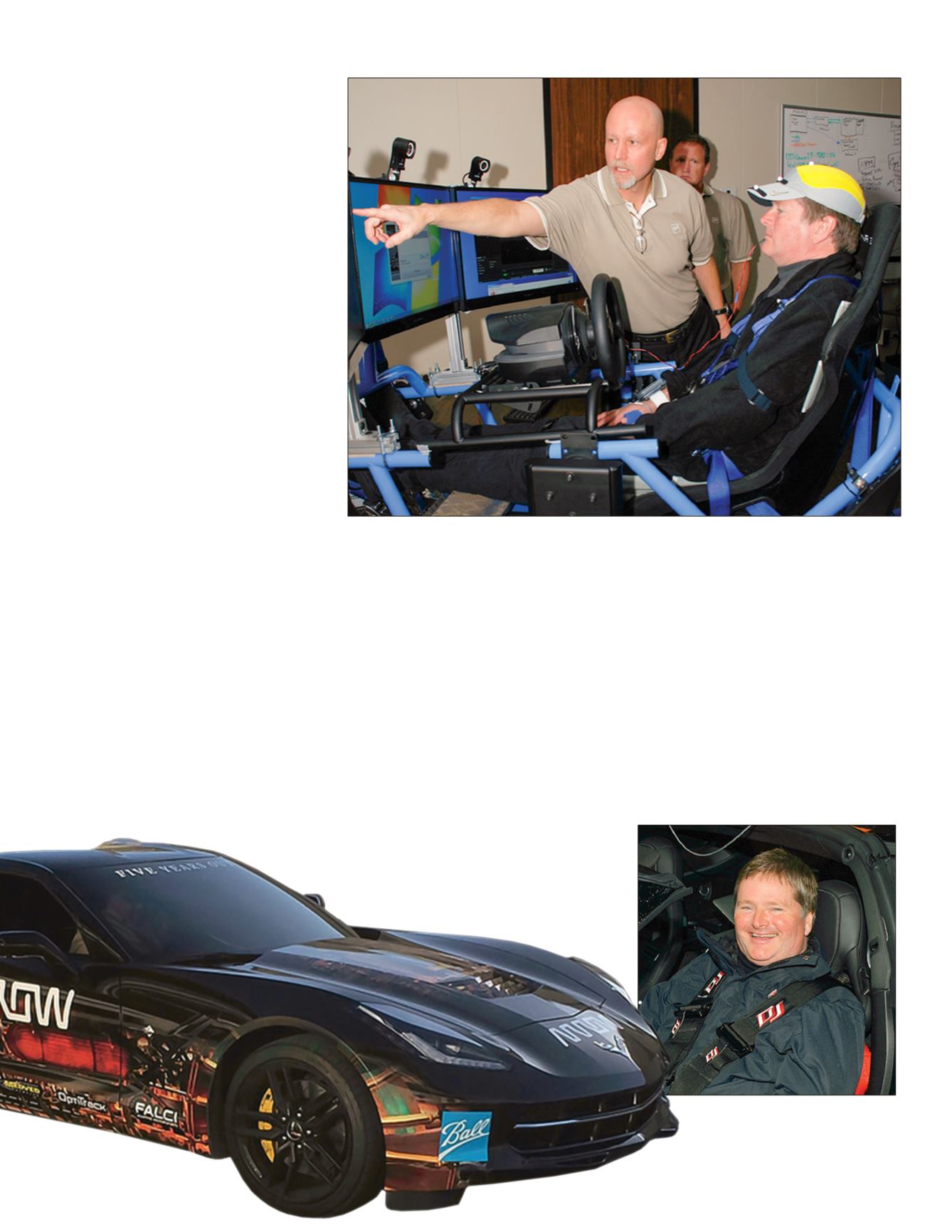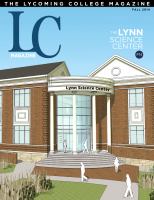

“Opportunities like that are once in
a lifetime,” Grigsby said. “Seeing Sam
drive again for the first time in the 14
years since his near-fatal racing accident,
was an amazing and immensely
satisfying experience,” he said.
“At first, we all thought, ‘this is nuts!’”
Grigsby said about the request to follow
up a racecar that had been modified with
automated hand controls for a paraplegic
person, with something that would work
for complete quadriplegics.
But Grigsby and his team thrive on
challenge, and the question nagged at his
brain: how do you enable a quadriplegic
to safely control a high-powered sports
car at speeds up to 100 mph, and get the
whole project done, start to finish, in less
than nine months? And, Sam Schmidt
would have to really control the car,
not just ride in an autonomous vehicle.
Could it really be done?
Grigsby’s curiosity won out. After
studying Schmidt’s capabilities
and brainstorming about possible
technologies, the Ball team designed
a system based on reliable motion
tracking technology, the same systems
used by Hollywood for motion
capture. With this system, they tracked
Schmidt’s head movements down to
less than a millimeter, and applying
some sophisticated algorithms, used
those movements to control steering
and acceleration. A pressure sensor
embedded in a bite mold allowed
Schmidt to slow and
brake.
Grigsby remembers the first time he and
Ball Chief Technologist Glen Geisen,
climbed into the simulator at Ball’s
Systems Engineering Solutions facility in
Dayton, Ohio, and saw the technology
work. “We were amazed at how well it
worked right from the start,” he said.
“You never know – in your head, you’re
always thinking about all of the little
things that can go wrong, but all the
while in your gut, you know it just has to
work,” added Grigsby.
After his first run in the simulator,
Schmidt was speechless. In his second
session, he completed a 2.5-mile virtual
lap in 42.55 seconds at an average speed
of 211.5 mph!
Later, after spending weeks in
Indianapolis calibrating cameras and
integrating the sophisticated systems
into a futuristic $65,000 2014 Corvette
C7 Stingray, Grigsby watched his
teammate, Ball Chief Technologist
Glen Geisen, don a hat festooned with
reflectors that are tracked by the infrared
cameras on the car’s dashboard – and by
tilting his head – turn the car’s steering
wheel for the first time. Soon after, it
Grigsby explains the technology to Schmidt. Image courtesy of Ball Aerospace &
Technologies Corp.
Sam Schmidt in the SAM car.
Image Courtesy of Brian Malone,
Fast Forward Films
The SAM car.
Image courtesy of
Ball Aerospace & Technologies
Corp.
25
www.lycoming.eduF E AT U R E S



















